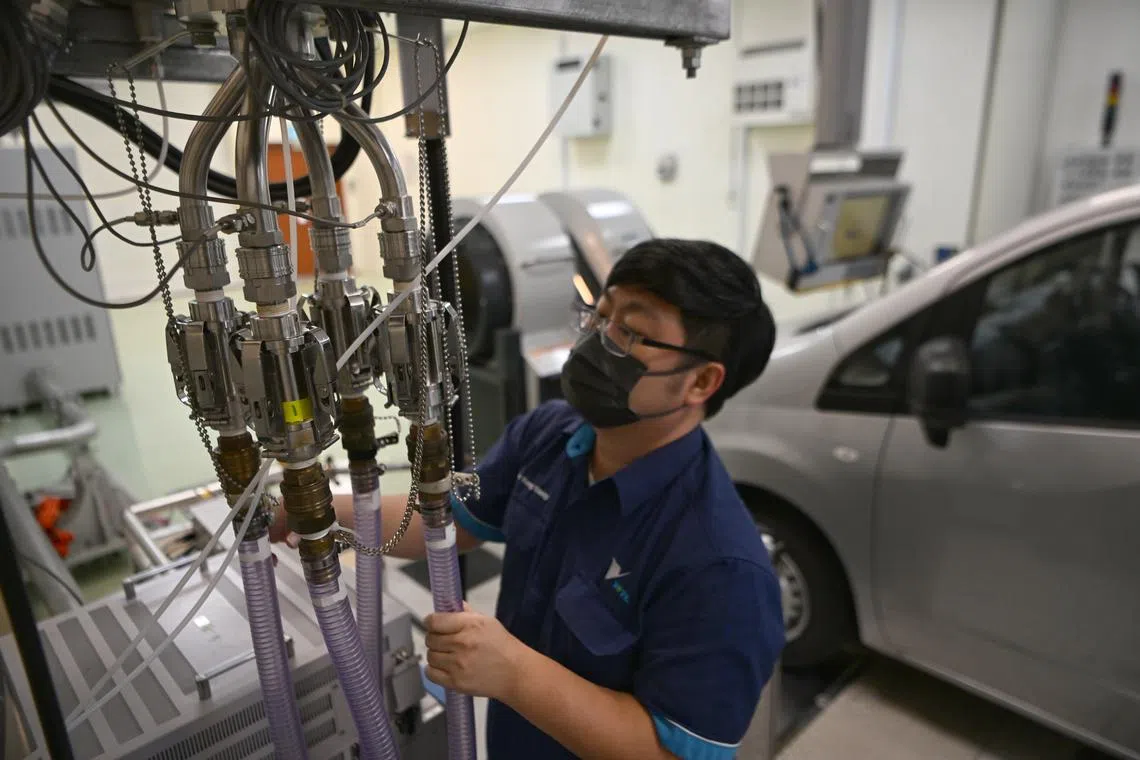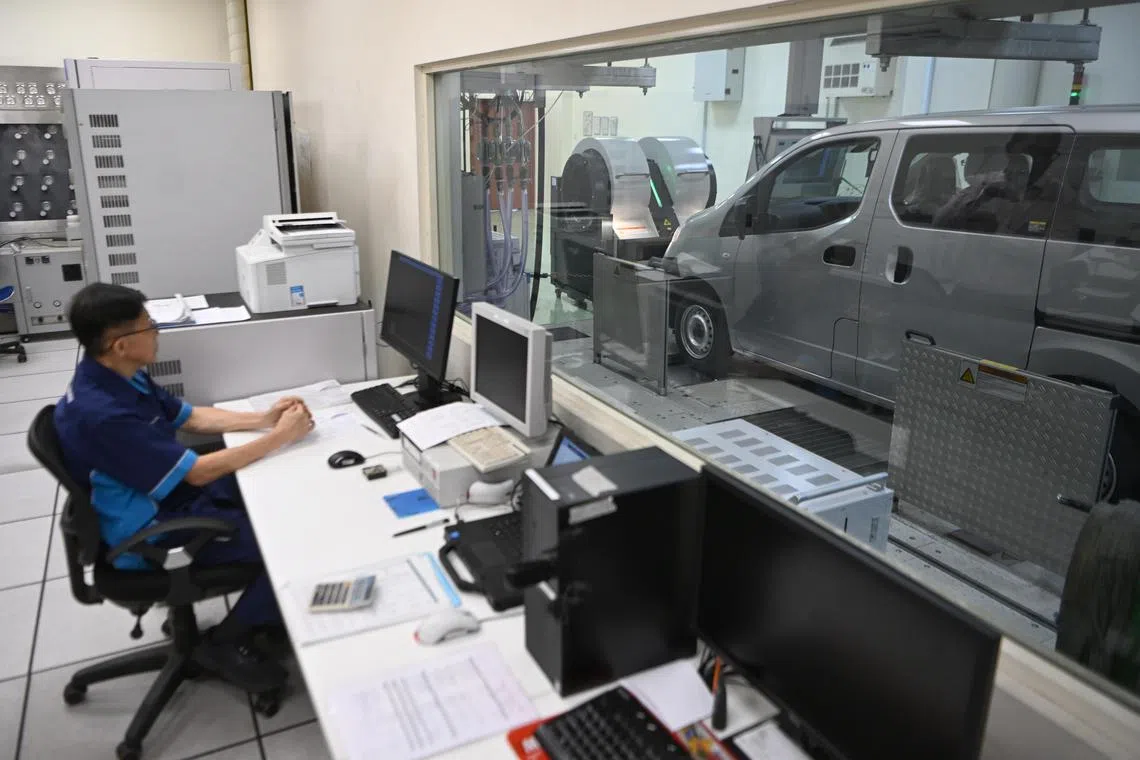Singapore lab for vehicle emission testing reopens after $3 million upgrade
Sign up now: Get ST's newsletters delivered to your inbox

All newly imported vehicles are required to have emission test reports from approved sources before they can be sold in Singapore.
ST PHOTO: ARIFFIN JAMAR
Follow topic:
SINGAPORE – Some importers are starting to breathe easier after a vehicle emission test facility received the green light to reopen on March 27 to certify vehicles under a more stringent standard.
This follows a two-month closure that led to a backlog of cars, light trucks and motorcycles that had to be tested.
The Vicom Emission Test Laboratory (VETL) in Bukit Batok, which is the only approved laboratory for emission tests in Singapore, was closed in January 2023 for a $3 million upgrade.
While the laboratory was closed, some dealers could not get their newly imported vehicles certified locally for registration. With the facility back in operation, the race is on to get their vehicles tested to make up for lost time.
A VETL spokesman said it now takes between one and two weeks to get a test slot and another three to five working days for the report to be ready. Each test costs upwards of $2,595, and up to 20 vehicles can be tested weekly.
The equipment can handle cars, motorcycles and trucks that weigh up to 3.5 tonnes.
All newly imported vehicles are required to have emission test reports from approved sources before they can be sold in Singapore.
Parallel importers said that they were more affected by the VETL’s temporary closure than authorised distributors, which can get ready test reports from vehicle manufacturers.
Without this direct link to the manufacturers, parallel importers have to send their vehicles for tests to get the required reports.
The emission test involves running the vehicle on the automotive equivalent of a treadmill in a climate-controlled laboratory. It will be driven in a certain pattern as defined by the test methodology.
The report will show the amount of pollutants produced during the test.
The laboratory was upgraded so that it could perform emission testing using the World Harmonised Light Vehicles Test Procedure (WLTP).
This test standard became the only one recognised by the Land Transport Authority (LTA) and National Environment Agency (NEA) for light commercial vehicles from April 1, 2023.
The two other standards, namely the New European Driving Cycle (NEDC) and Japanese Driving Cycle (JC08), were dropped.
NEA had announced this change on April 2, 2021.
The change in requirement for light commercial vehicles also applies to trucks and minibuses that were approved earlier using NEDC testing but were not registered before April 1, 2023.
This group of vehicles adds to the demand for emission tests locally.
Motor dealer Green Volt, which started distributing electric vehicles (EVs) from Chinese manufacturer Higer in Singapore in 2022, is among those getting vehicles tested at the VETL. Higer was not able to provide test results based on WLTP.
Although EVs do not produce tailpipe emissions, they are required to undergo WLTP-based tests to determine the electric energy consumption. The result is then used to calculate the equivalent carbon dioxide emission value.

The Vicom Emission Test Laboratory in Bukit Batok was closed in January 2023 for a $3 million upgrade.
ST PHOTO: ARIFFIN JAMAR
The NEA adopted WLTP in 2019 as one of the testing protocols for vehicle approvals and measurement of emission pollutants, with the intention of making a complete switchover in the longer term. This follows the introduction of WLTP in Europe in September 2017.
WLTP is regarded as being more reflective of real-world conditions than other protocols like NEDC and JC08. Among other differences, WLTP requires the vehicle to run a longer distance with more variations in speed and duration than the other two types of tests.
In a 2017 study published by the European Commission’s Joint Research Centre on the difference in terms of declared carbon dioxide levels, vehicles tested under WLTP were found to post around 20 per cent higher figures than those using the NEDC method.
Having lower emission results can translate to qualifying for more incentives under the relevant vehicular emission schemes. In the case of private cars, moving to the next tier on the scheme can mean a difference of up to $15,000 in rebates.
For commercial vehicles, the difference is $10,000.
From Jan 1, 2024, cars and taxis will also be restricted to WLTP-based emission test results.
Set up in 2009 at the cost of close to $6 million, the VETL is among a list of vehicle emission testing facilities recognised by the LTA. Others are located in countries such as Japan and China.
Mr Neo Nam Heng, honorary adviser to the Automobile Importer and Exporter Association in Singapore, said that it is currently not practical to send vehicles to the laboratories overseas, adding that “it is good that importers can at least get back to doing business again”.


